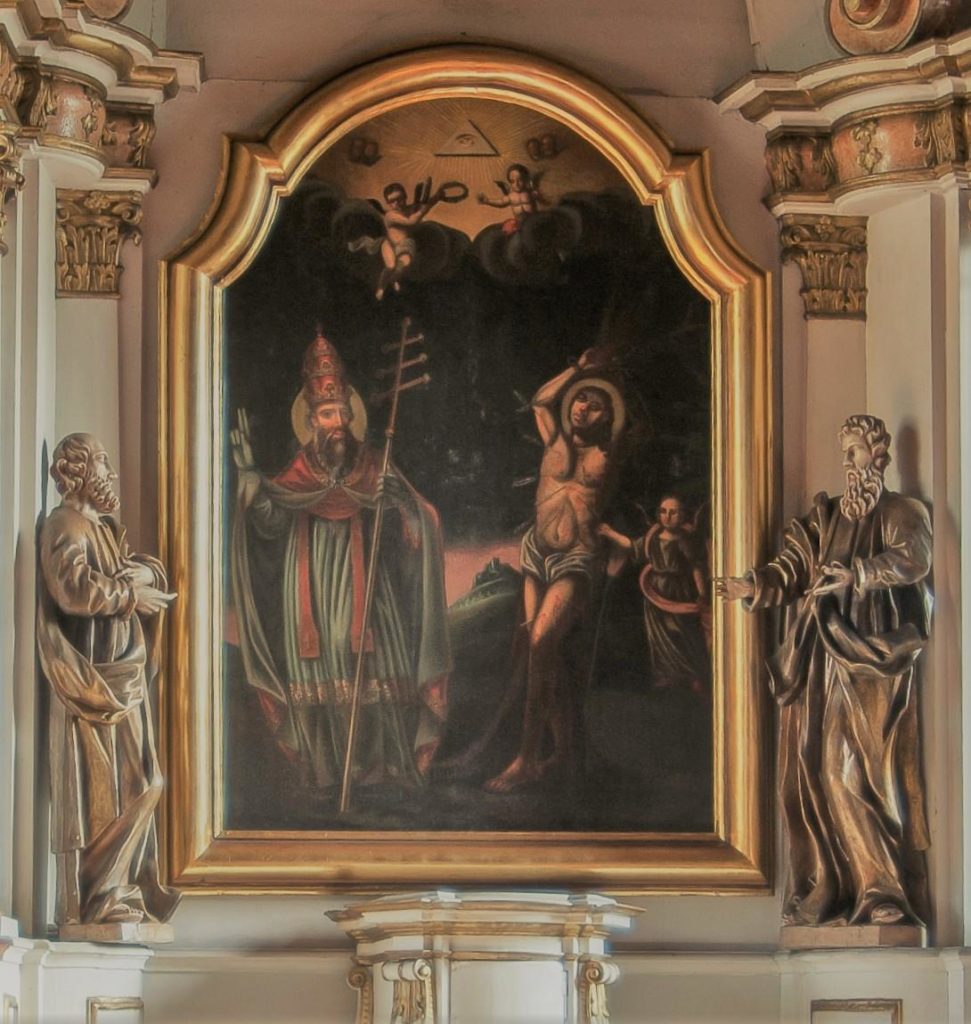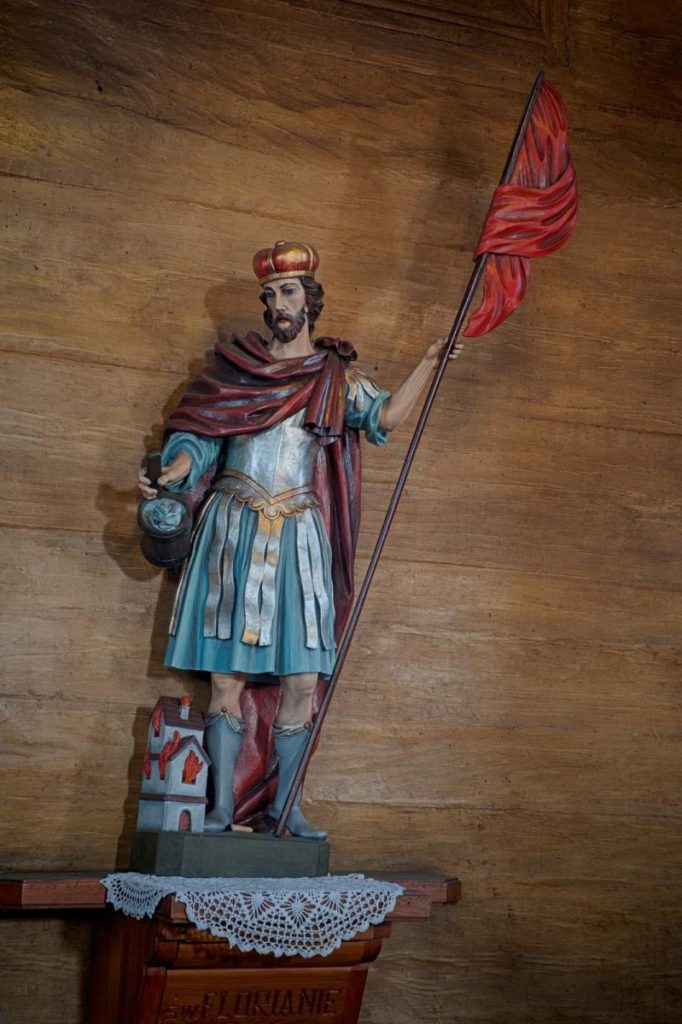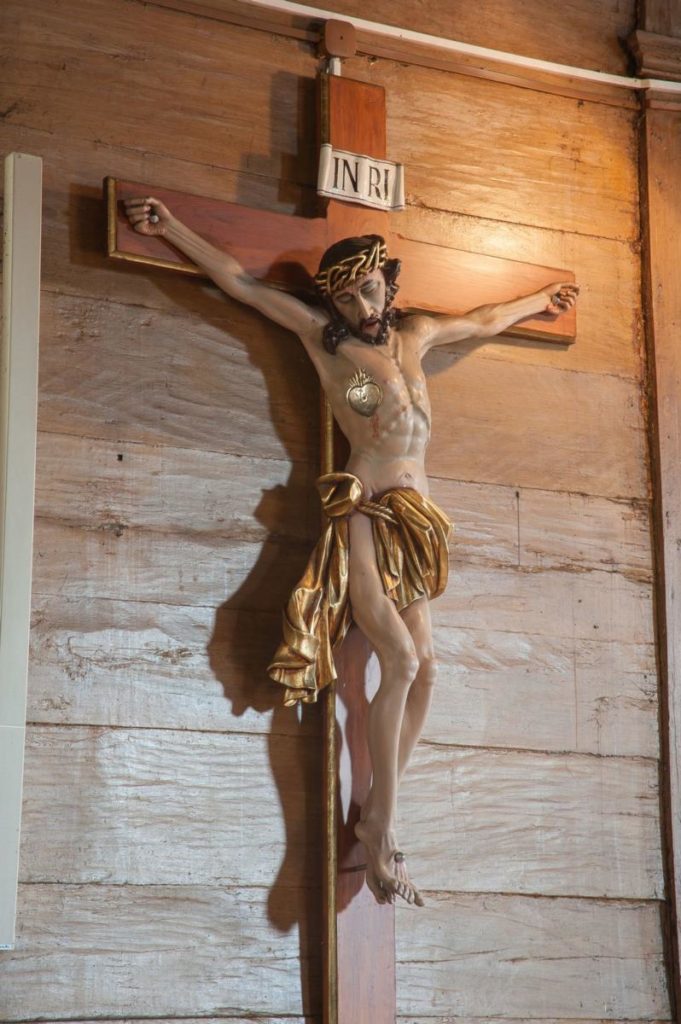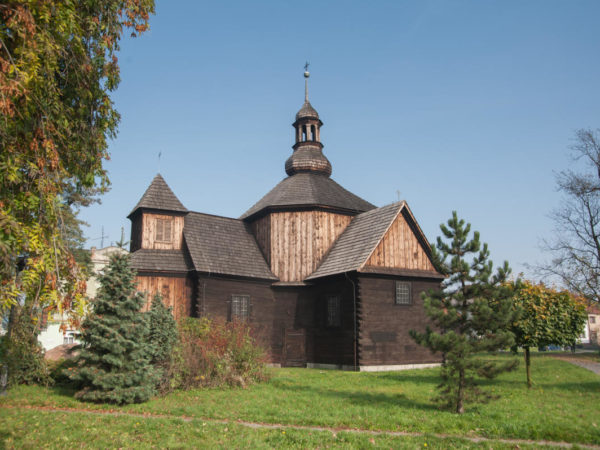Wooden monuments
UNUSUAL SAINTS
Having entered the church, one can easily notice an architectural altar from the Baroque period (the second half of the 18th century). In the central panel between the figures of saints St. Peter and St. Paul there is the most valuable object: painting of the saints Fabian and Sebastian from the second half of the 17th century. Their share the same feast day, January 20.

- St. Fabian – a Pope, martyr who improved Church administration in Rome by diving it into 7 districts. During the Decian persecution he died on arena on January 20, 250 AD. In the time of the Roman Empire, such types of buildings were designed for entertainment: crowds who would sit in stands observed gladiators’ fights, games and martyrdom of first Christians (e.g. sentenced to be eaten alive by wild animals). In the painting, St. Fabian is shown with a papal tiara on his head and a pontifical cross in his hand. He is the patron saint of potters and pewter makers (craftsmen who make tin castings). According to legend, during a gathering when a new pope was to be chosen, above Fabian’s head a dove appeared. It was considered a God’s sign and this is how he became the successor to the Vatican throne of St. Peter, that is the bishop of Rome.
- St. Sebastian – a Roman soldier, a martyr. For his pious dedication to Christian faith, he was tied to a pole and shot at with arrows. According to Jacob de Voragine, “So many arrows stuck in him that he resembled a hedgehog”. However, Sebastian did not die. A certain woman took care of him and when he recovered, he went to see the emperor Diocletian again and harangued him for his persecutions towards Christians. Angry emperor ordered Sebastian be beaten to death by cudgels. Sebastian is one of the most popular saints. He is the patron saint of archers, riflemen and soldiers among others.
- St. Florian – similarly to Sebastian, St. Florian was a Roman soldier. When in the 16th century a church in Karków which kept his relics survived a fire, St. Florian became a Polish advocate during all natural disasters, especially fires. His characteristic attribute is a pail (a wooden bucket) with which he puts out fires of buildings. He also aids all those whose professions are connected with fire: firemen, ironmasters, chimneysweepers. The figure of the saint is almost 250 years old.

CONQUEROR OF DEATH

On the rood wall on the left to the altar, there is a crucifix from the second half of the 17th century. The body of Crucified Christ has been aestheticized, as His body is not struck with pain, it does not horrify the viewers with the drama of the passion as it used to in the medieval art, when Christ’s physical suffering was emphasized. The body of Christ from the crucifix from Krotoszyn is slender and lightly painted, subtle facial features can be noticed without visible suffering. Additionally, one can notice intricate twists of the crown of thorns and a so called perizoma – a loin cloth draped elaborately around hips. This delicate image emphasizes the divine nature of Christ, which conquer over the earthly human figure. It is an announcement of resurrection – the defeat of death.
Detachment and spirituality were enhanced by emphasis of Christ’s fifth would in the chest. It was done by a soldier with a spear, out of which blood and water came out, the evident proof of death. This place was marked with a silver, burning heart.





